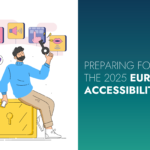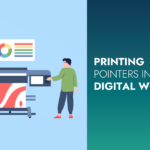Are you new to content marketing and do you need to get up to speed with all those tricky content marketing terms?
Well, look no further. With our glossary of terms, you’ll be up to speed in no time.
This is the first in our two-part series. Below we cover terms from the letter ‘a’ through to ‘e’, and next week we’ll pick up where we left off.
Analytics
Noun
The information that comes from the systematic analysis of data.
The only way to know if your content is working or not is to make use of analytics. Analytics allow you to see which posts perform best, at what time they perform best, which posts generate a site visit, a lead, or even an actual paying customer. Great content gets results, but analytics allow you to measure those results.
Buying cycle (or buyer’s journey)
Noun
The process a buyer goes through to become aware of, assess, and purchase a new product or service.
There are three stages of the buying cycle. The first is the awareness stage, in which the buyer realises they have a need they want to fulfil. The second is the consideration stage, where the buyer starts to evaluate solutions to their need. And the third stage is the decision stage, where the buyer chooses a solution. It’s important to be aware of these stages and to target potential customers with content that’s tailored to fit their stage.
Content marketing
Noun
A strategic marketing approach that’s focused on creating and distributing valuable, relevant and consistent content to attract and retain a clearly defined audience – and to ultimately drive profitable customer action.
Customer persona (or buyer persona)
Noun
A hypothetical profile from your target audience, that allows you to create content that appeals to their specific needs.
If you want to be a content marketing expert, you need to know your audience. It’s a vital part of creating valuable, tailored content. Creating customer personas helps us to think of our customers clearly and to relate to them as real human beings.
Content strategy
Noun
The planning, creation, delivery and governance of valuable, relevant and consistent content.
Great content is nothing without a content strategy. A strategy gives structure to your content and allows you to provide the right content, to the right people, at the right time. It should include your aim, your target audience, your business goals and your content objectives.
Call-to-action (CTA)
Noun
A piece of content intended to induce a reader to perform a specific act like subscribing to a newsletter, clicking through to another page on your website, or purchasing a product.
CTAs are vital to content marketing. Not only do they prompt users to visit other pages on your website, they also help convert site traffic brought via great content into contacts in your database. For example, readers will provide their contact details in exchange for a downloadable piece of content or even to sign up to a newsletter.
Editorial calendar
Noun
A road map used to keep your content organised and on schedule. It shows you what content to create, which KPIs and topics to cover, which personas to target and how often to publish.
An editorial calendar is key to a successful content marketing strategy. It will keep you organised and will allow you to see that you’re ticking all those boxes outlined in your strategy.
Electronic Direct Marketing (EDM) or email marketing
Noun
A way of targeting customers with great content, directly, via email.
EDMs, or email marketing, unlike spam, reach only those who are interested in your area of expertise. All information sent via EDM is targeted and it can reach numerous potential customers directly for a low cost. When creating an EDM, make sure to use a mix of graphics, text and links, to make it both visually appealing and as engaging as possible.
Engagement
Noun
The act of engaging consumers, by inviting and encouraging them to participate in your brand experience.
It’s a good idea to engage customers to allow them to interact with and develop a relationship with your brand, rather than allowing them passively receive messages. You want your customers to do something with the content, whether it’s comment, like or share it, and there are loads of metrics that allow you visibility into engagement.
Watch out for part two in the content marketing terms series next week. And to make sure you never miss a post, you can follow us on social, via Twitter or LinkedIn.

















